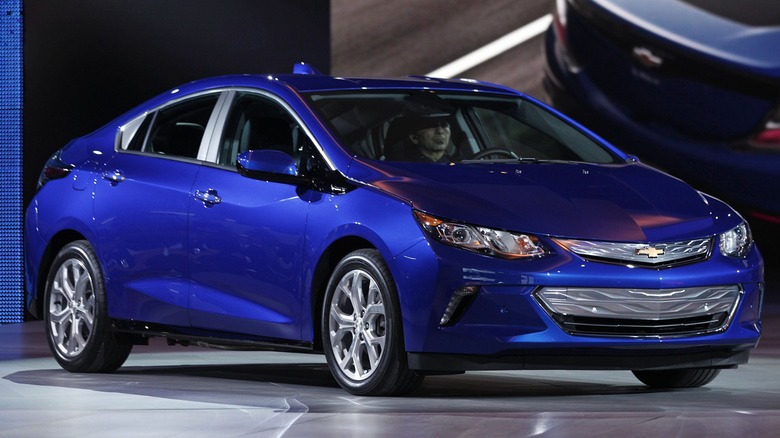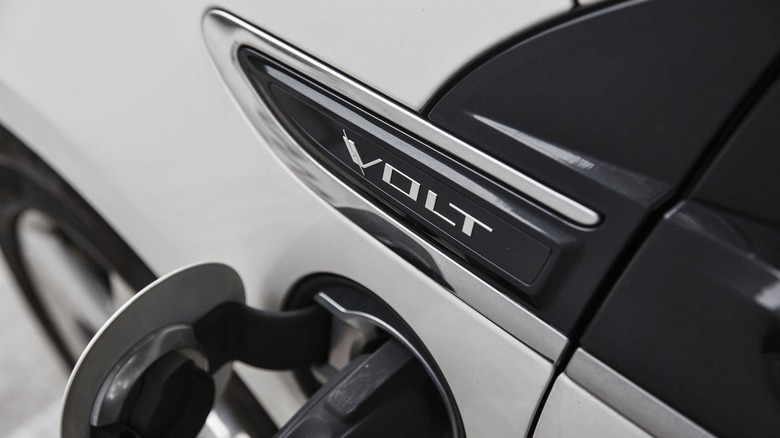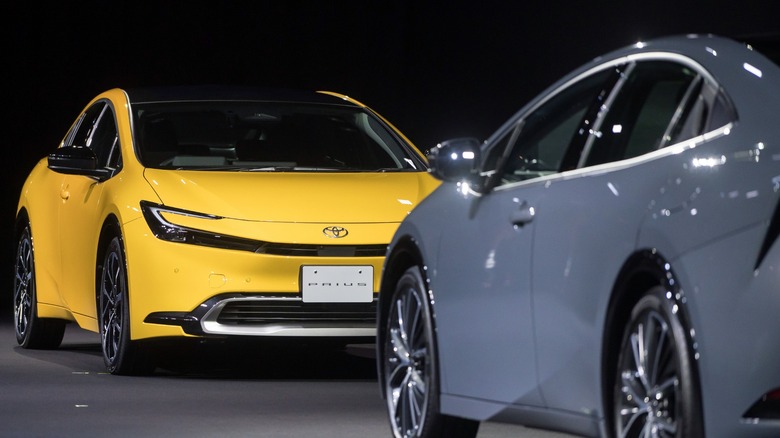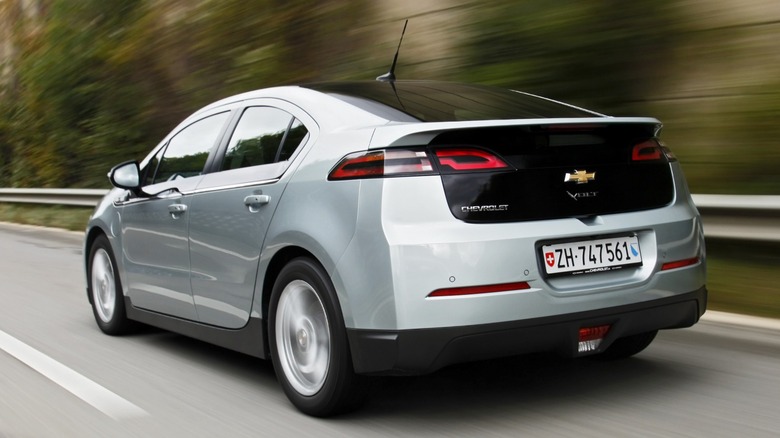5 Reasons Why Chevy Needs To Bring Back The Volt
The Chevrolet Volt was the first American plug-in hybrid electric car, with production starting in 2010 for the 2011 model year. It was lauded for its features, including the best all-electric driving range in its segment, where it could hit 53 miles before the gasoline engine turned on.
However, GM discontinued the Volt in 2019 for several reasons, primarily because it was a small car, and sedan sales were falling globally. According to GM Authority, the Volt's sales numbers were down below 21,000 units annually by 2018, making it unprofitable. Another reason was that the company wanted to focus on pure EV production, especially as it was already selling the all-electric Chevy Bolt EV.
But five years after GM stopped production, some of its dealers now demand that it make a hybrid car—something that the Chevy Volt was. So, GM should bring it back instead of spending several years and billions in research.
More people want hybrids or PHEVs over EVs
According to AP, hybrid car sales continue to grow while EV sales slow down. The US saw over 1.2 million hybrids sold in 2023—a 59% jump over the 2022 record—while EVs only sold 976k units. This still showed 37% growth from the previous year but has missed industry expectations.
This slowdown is attributed to the nationwide decline in gasoline prices, the reduction of EV incentives, and the relatively high price of EVs versus other vehicles. Even though manufacturers like Tesla started cutting prices, EVs are still expensive compared to gas-powered and hybrid cars.
The average EV price in March 2023 was $58,940, while the average hybrid only cost around $36,340. Although the 2017 Chevy Volt had a $34,095 sticker price (around $42,000 in today's dollars), this is still way below the average EV price. Furthermore, GM could reduce the Volt's price, especially as technological advancements make batteries cheaper.
So, if GM reintroduces the Chevy Volt, it'll have a model that can take advantage of this uptick in interest in hybrid cars.
The Chevy Volt is a good middle ground between gasoline and electric cars
Although the EV infrastructure in the US has gone a long way, there are still not enough chargers to keep electric cars on the road—one of the biggest reasons people are holding off on purchasing an EV. This is especially true for car owners who live in apartments, condominiums, and other residences without a private garage or have parking spaces that cannot accommodate a charger.
Although The Washington Post reports that most journeys by car are less than 30 miles—a fraction of the 349-mile average range of EVs—buyers still fear range anxiety. That's because the lack of charging infrastructure means the occasional long-distance journey in an EV is hugely inconvenient.
Nevertheless, many know the need to reduce vehicles and help stop global warming. However, while one could purchase an EV for city driving and a gasoline-powered car for longer distances, not everyone could afford it or have the parking space for two vehicles.
So, a plug-in hybrid like the Chevy Volt is an excellent option for drivers looking for a more environmentally friendly new car. Its 53-mile all-electric range means you can run it on electricity on most journeys and charge it at home. But when you need to travel longer distances or can't find a nearby charging station, its gasoline engine means you can still reach your destination without requiring a tow.
The Toyota Prius Prime needs a competitor
As of 2023, the only non-luxury plug-in hybrid sedan on the market is the Toyota Prius Prime, with its price starting at $32,000. As more buyers are looking for hybrids and PHEVs, Toyota is poised to take over the small car PHEV market as it's the only option available.
Furthermore, the 2023 Prius Prime isn't just a novelty—instead, it's an actual good car with a great new look. As more people get interested in this segment again, some buyers might seek an alternative, which is when a new Chevrolet Volt could come in. GM could effectively split the sedan PHEV market with Toyota by providing a competitive alternative.
Although the Volt was last updated in 2016, its exterior looks and interior furnishings are still relatively up-to-date. With just a few tweaks here and there, like a front-fascia facelift, a revamped rear, a larger infotainment screen, and a revised interior, the Chevrolet Volt could compete with the best of them in 2024.
Chevrolet needs to sell more cars
Many American car makers have abandoned the small car because of market trends, with Ford totally stopping the production of sedans and hatchbacks in the U.S. Although Chevrolet still has a sedan, its only available option is the Malibu—a mid-size gas-powered sedan that starts at $25,100.
Since 2002, the car market has steadily declined in favor of trucks, crossovers, and SUVs. However, there are reports that the car's market share increased to 21.4% in the first quarter of 2022. In an interview with Automotive News, J.D. Power VP of data and analytics Tyson Jominy said, "It seems like we're approaching some kind of natural boundary, where SUVs are about 60% of the market, and pickups and vans and trucks are about 20%, and cars are about 20% percent."
If this trend stays true, Chevrolet could miss out on 20% of the market if it fails to launch additional hybrid and PHEV models in its sedan lineup. By reintroducing the Chevrolet Volt, GM will have a strong offering in this segment while ensuring it stays compliant with its carbon footprint targets and giving buyers an alternative to other PHEV sedans.
The Chevrolet Volt gives you the best of both worlds
Plug-in hybrids like the Chevrolet Volt are great alternatives to electric vehicles. They're more affordable, drive under electrified power, and have no range anxiety. Additionally, the Volt's PHEV setup means its gasoline engine will only run when the battery hits its minimum charge level.
So, if you frequently top-up the Chevy Volt via its charger, you won't need to use its gasoline engine for most journeys. But if you plan to travel long distances, you won't have to go out of your way to find a charger, as you can simply refuel in any gas station along the way.
This is also useful if you forget to recharge your car when its battery runs low—as long as you have some fuel in the tank (which some users say can remain unused for months on end), you won't get stuck as the gasoline engine will recharge the battery and provide power to the Volt's electric motors.
It's unfortunate that Chevrolet discontinued the Volt in 2019, but it was a wise decision then, especially as GM had been losing money on it. Nevertheless, market demands have changed, and people are seemingly clamoring for more hybrid models. So, if GM wants to fill this need, they have an excellent candidate with the Chevrolet Volt.





